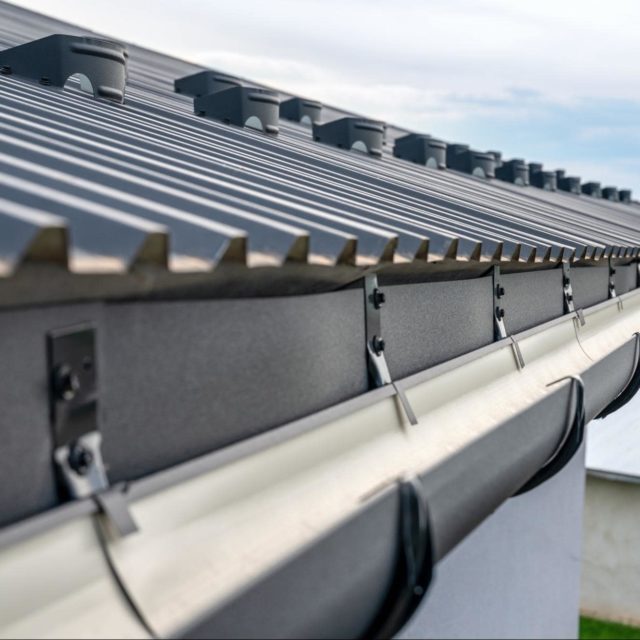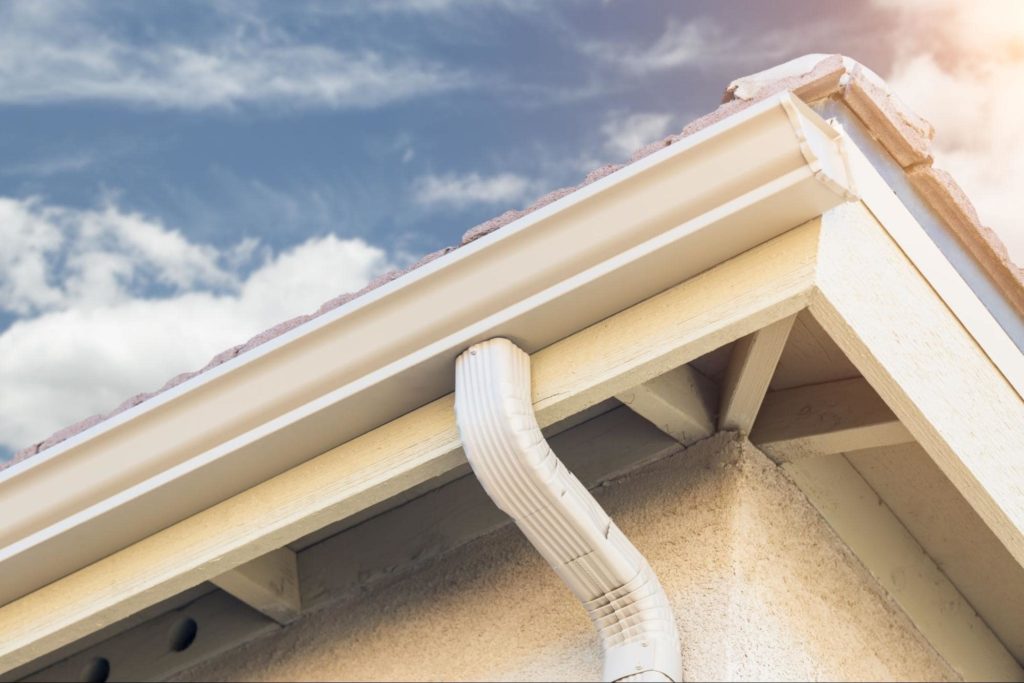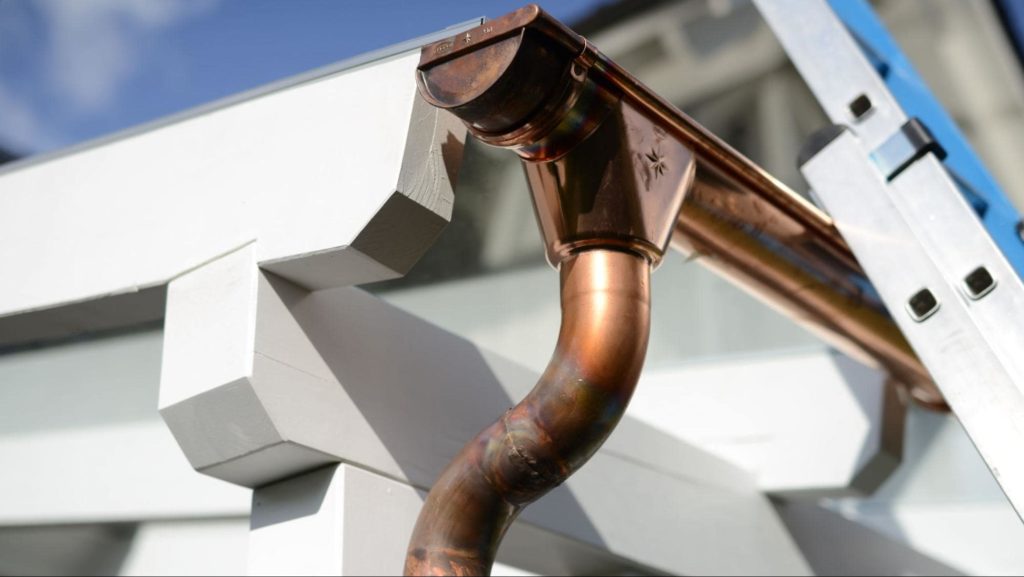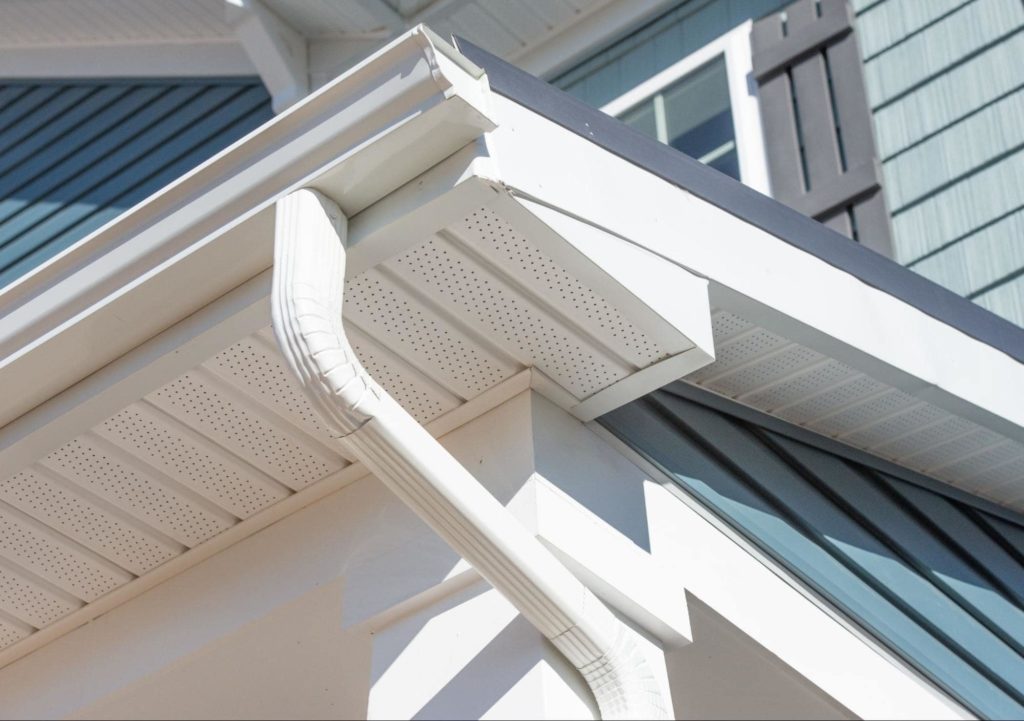The Pros & Cons of Different Styles of Gutters

- Written by: jlbmdev

Gutters are responsible for water management; they help keep water from accumulating around the foundation of your home, preventing flooding and costly water damage. However, choosing the right styles of gutters for your home can feel daunting, especially with all the options available on the market.
In this blog, we’ll explore different styles of gutters, types, and materials to help you learn how to choose the right gutters for your house.
Most homes have (or should have) rain gutters. However, there are some exceptions.
If your roof doesn’t have an overhang — or only has a few inches of overhang — water will likely accumulate against the foundation of your home. This can result in damaged flower beds, flooded basements, and water pouring down on you as you come and go on a rainy day. If this sounds like your situation, you’re going to want to have gutters installed.
Water is unlikely to pool around your home’s foundation if it sits on an elevated space compared to the rest of the property. Also, if your home is constructed with a sharply peaked roof, with an overhang of 12 inches or more, rainwater will naturally cascade away from the house. In both of these cases, gutters are most likely unnecessary for your home.
Rain gutters may be optional if your house is surrounded by concrete such as an outdoor kitchen, walkways, or driveways. Concrete serves as a protective layer between the runoff and the foundation.
However, if your house sits slightly lower than the surrounding ground, gutters are required to channel runoff a sufficient distance away from the foundation.

If your home does need gutters, it’s important to understand the differences between the two most popular gutter types — sectional (also known as seamed or traditional) and seamless.
Sectional gutters are sold in pieces and patched together to create one larger system. Typically, they come in various lengths depending on style, including 10- to 20-foot sections and are attached with a snap system or adhesive. Sectional gutters are made from the same coil as seamles s gutters (which we’ll cover below), and are essentially just as durable.
The main difference between sectional and seamless is that sectional gutters are riveted together, and gutter seal is used at the seams, whereas seamless gutters are not (hence the name).
Sectional gutters are usually cost-effective and easy to install. Some gutter experts in the industry have stated sectional gutters may begin to slowly separate and leak over time since the gutters are comprised of sections instead of one continuous system. However, this is usually avoided if you prioritize purchasing quality gutters and opt for professional installation.
Pros
Cons
Seamless gutters are made from a single piece of material, so they require no joints or fasteners to run the length of your home. They are professionally cut to the exact length needed for your home from a long piece of gutter.
As the name describes — these gutters have no seams, so leaks are much less likely to occur. As a result, less debris gets caught in the gutter, resulting in less maintenance.
Additionally, since seamless gutters are made from one piece of high-quality material, they typically hold up better over time.
Pros
Cons
Now, let’s take a look at some of the best gutter materials to help you determine which one is right for your home.
The strength, durability, and rust resistance of copper gutters make them a go-to for many homeowners. In addition, copper is extremely strong and sturdy, allowing this type of gutter to better withstand debris and natural wear and tear. Properly maintained copper gutters can last generations, but only if they’re installed correctly.
Pros
Cons

There’s a reason aluminum is one of the most popular options of gutter materials. Rust-resistant and weatherproof, aluminum gutters are lightweight and durable.
Aluminum is also easy to paint over, meaning you can repaint them to match the color and aesthetic of your home. Aluminum gutters are a great option for homeowners looking for a high-quality gutter that blends in with the unique aesthetic of their home.
Pros
Cons

In addition to gutter types and materials, the three most popular styles of gutters are half round, k-style, and fascia.
Branded as an outdated style of gutter by some, half-round gutters are constructed in a “U” shape. They’re pleasing to the eye, especially for certain homes with a more historical or colonial aesthetic. Given their complicated design, half-round gutters are usually more expensive to install.
Pros
Cons
By far the most popular gutter style on the market, k-style gutters are also the most durable option. Known for its iconic “k” shape when looked at from the side, this style of gutter curves out on the bottom, resembling crown molding.
K-style gutters are much more durable than half-round and can withstand debris more effectively, leading to less bending and other damage. K-style gutters are the style of choice for seamless gutters and come in a wide variety of materials, making them as versatile as they are durable.
Pros
Cons
European style gutters are half-round gutters with gutter beads that turn to the outside (instead of the inside) and are fastened into place by a half-round hanger. These gutters are common in European systems and are sought after for their new penny gloss look when first installed.
European style gutters offer a wider overall circumference and openging, which helps with water flow during periods of heavy rain. This style of gutter is also less accommodating to birds and rodents, due to the curved underbelly design and the concave floor of the gutter.
Pros
Cons
Boston Gutter Systems offer the aesthetic appeal of wood with the durability of PVC. The PVC Boston Gutter System is a popular choice for homeowners looking for gutters that don’t require painting, oiling, and are essentially maintenance-free.
Pros
Cons
Steel gutters have been a popular choice among builders and homeowners for years. Steel gutters are rtoically less than hald the cost of aluminum gutters, and their durability makes them a trustworthy choice for homeowners looking to reduce the amount of TLC needed for their gutters.
There are several different types of coating materials available on the market to inhibit rust, and painted steel gutters allow you to prioritize aesthetics without sacrificing strength and durability. Nordic Steel Gutters is a high-quality manufacturer known for commercial steel gutters that is growing in popularity amongst residential homeowners, too
They offer beautiful designed Swedish style half-round gutters that are rigorously tested and proven to withstand even the most extreme climates.
Pros
Cons
Along with gutter styles, you also need to consider gutter size (the measurement of the top opening), downspout size (length and width or diameter), and thickness. The most common gutter sizes are 5 inches and 6 inches (although 4 inches is available as well). We recommend a 6” gutter for homes with steep pitches or large roofs.
For downspouts, you’re usually looking at around 2 x 3 inches and 3 x 4 inches in size (or around 3 or 4 inches in diameter).
The size of a home’s gutter system is dependent on a few factors — one of them being the area’s rainfall. If you live in an area with a more than average rainfall (such as PA), than a larger gutter system is in your favor. A home surrounded by a lot of tall trees will also need a larger gutter system accommodate falling leaves and debris without clogging.
Like any significant home remodeling or renovation project, installing gutters correctly should be done by a licensed and professional contractor. To find trusted and experienced contractors, visit our Find a Contractor page and get started today.